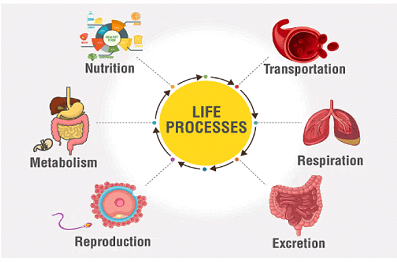Homologous Series and Its Characteristics
Introduction to Homologous Series
In organic chemistry, a homologous series is a sequence of compounds with the same functional group and similar chemical properties, in which each member differs from the next by a specific structural unit (typically a CH2 group). Understanding homologous series is fundamental to mastering organic chemistry and is frequently examined in tests and competitive examinations.
Definition: A homologous series is a family of organic compounds that have the same functional group but differ by a CH2 (methylene) group in their molecular formula.
For example, the series of straight-chain alkanes (methane, ethane, propane, butane, etc.) constitutes a homologous series. Each member in this series differs from the next by a -CH2– group.
Key Characteristics of a Homologous Series
Homologous series exhibit several important characteristics that make them significant in the study of organic chemistry:
- Common General Formula: All members of a homologous series can be represented by the same general molecular formula. For example, alkanes have the general formula CnH2n+2, where n is the number of carbon atoms.
- Similar Chemical Properties: Members of a homologous series show similar chemical behavior because they contain the same functional group. For instance, all alcohols (R-OH) undergo similar reactions due to the presence of the hydroxyl (-OH) group.
- Gradation in Physical Properties: Physical properties such as melting point, boiling point, density, and solubility show a consistent trend as the carbon chain length increases within a homologous series.
- Consecutive Members Differ by -CH2– Group: Each member differs from the adjacent one by a methylene (-CH2-) group, resulting in a difference of 14 atomic mass units (u).
- Same Method of Preparation: Members of a homologous series can often be prepared using similar chemical methods.
- Similar Spectral Characteristics: Compounds in a homologous series show similar patterns in their spectroscopic data (IR, NMR, etc.) with predictable variations.
Common Homologous Series in Organic Chemistry
Here are some important homologous series that you should be familiar with for your examinations:
| Homologous Series | General Formula | Functional Group | Example |
|---|---|---|---|
| Alkanes | CnH2n+2 | None (saturated hydrocarbons) | CH4 (methane), C2H6 (ethane) |
| Alkenes | CnH2n | C=C (double bond) | C2H4 (ethene), C3H6 (propene) |
| Alkynes | CnH2n-2 | C≡C (triple bond) | C2H2 (ethyne), C3H4 (propyne) |
| Alcohols | CnH2n+1OH | -OH (hydroxyl) | CH3OH (methanol), C2H5OH (ethanol) |
| Aldehydes | CnH2n+1CHO | -CHO (aldehyde) | HCHO (methanal), CH3CHO (ethanal) |
| Ketones | CnH2n+1COCmH2m+1 | C=O (carbonyl) | CH3COCH3 (propanone) |
| Carboxylic Acids | CnH2n+1COOH | -COOH (carboxyl) | HCOOH (methanoic acid), CH3COOH (ethanoic acid) |
| Ethers | CnH2n+1OCmH2m+1 | -O- (ether linkage) | CH3OCH3 (dimethyl ether) |
| Esters | CnH2n+1COOCmH2m+1 | -COO- (ester linkage) | CH3COOCH3 (methyl acetate) |
Trends in Physical Properties
The physical properties of compounds in a homologous series show predictable trends as the carbon chain length increases:
1. Boiling Point
Boiling points increase with increasing molecular weight due to stronger van der Waals forces between larger molecules. This increase follows a regular pattern, making it possible to predict the approximate boiling point of an unknown member.
Example: Boiling points of first few alkanes:
- Methane (CH4): -161.5°C
- Ethane (C2H6): -88.6°C
- Propane (C3H8): -42.1°C
- Butane (C4H10): -0.5°C
- Pentane (C5H12): 36.1°C
Notice how each additional -CH2– group increases the boiling point by approximately 20-30°C.
2. Physical State
There is a gradual transition in physical state as the carbon chain length increases:
- C1-C4: Gases at room temperature
- C5-C17: Liquids at room temperature
- C18 and above: Solids at room temperature
3. Solubility in Water
Solubility in water generally decreases with increasing molecular weight. This is because:
- The non-polar hydrocarbon chain becomes longer (hydrophobic part increases)
- The influence of the polar functional group (if present) becomes relatively less significant
4. Density
Density generally increases with increasing molecular weight, eventually reaching a limiting value.
5. Viscosity
Viscosity increases with increasing molecular weight due to stronger intermolecular forces and greater molecular entanglement.
Importance in Organic Chemistry
Understanding homologous series is crucial in organic chemistry for several reasons:
- Systematic Study: Homologous series allow for the systematic study of organic compounds by grouping similar compounds together.
- Predictive Power: Knowledge of trends within a homologous series enables chemists to predict properties of unknown or newly synthesized compounds.
- Simplification: Instead of studying hundreds of individual compounds separately, chemists can learn the properties of entire families of compounds together.
- Nomenclature: IUPAC nomenclature is based on identifying the homologous series to which a compound belongs.
- Industrial Applications: Many industrial processes involve separating members of homologous series (e.g., petroleum refining).
Detailed Example: The Alkane Homologous Series
Let’s examine the alkane homologous series in detail as an illustrative example:
General Formula: CnH2n+2
First 5 members:
| Name | Molecular Formula | Structural Formula | Boiling Point (°C) |
|---|---|---|---|
| Methane | CH4 | CH4 | -161.5 |
| Ethane | C2H6 | CH3-CH3 | -88.6 |
| Propane | C3H8 | CH3-CH2-CH3 | -42.1 |
| Butane | C4H10 | CH3-CH2-CH2-CH3 | -0.5 |
| Pentane | C5H12 | CH3-CH2-CH2-CH2-CH3 | 36.1 |
Chemical Properties: All alkanes undergo similar reactions:
- Combustion: CnH2n+2 + (3n+1)/2 O2 → n CO2 + (n+1) H2O
- Halogenation: CnH2n+2 + X2 → CnH2n+1X + HX (where X = Cl, Br)
Application: Isomerism within Homologous Series
As the carbon chain length increases within a homologous series, the possibility of isomerism increases:
- Methane (CH4): No isomers possible
- Ethane (C2H6): No isomers possible
- Propane (C3H8): No isomers possible
- Butane (C4H10): 2 isomers (n-butane and iso-butane)
- Pentane (C5H12): 3 isomers
- Hexane (C6H14): 5 isomers
- Heptane (C7H16): 9 isomers
The number of possible isomers increases rapidly with the number of carbon atoms, leading to a vast diversity of organic compounds even within a single homologous series.
Exam-Focused Tips and Common Questions
Important Points to Remember:
- The difference between consecutive members of a homologous series is always a -CH2– group (14 mass units).
- The general formula uniquely identifies a homologous series.
- All members of a homologous series contain the same functional group.
- Physical properties show gradual trends, but chemical properties remain largely similar.
- The lower members of a series often show some anomalous behavior compared to the trend observed in higher members.
Sample Exam Questions:
Question 1: The general formula for alkenes is:
- CnH2n+2
- CnH2n
- CnH2n-2
- CnH2n+1OH
Answer: b. CnH2n
Question 2: Which of the following is NOT a characteristic of a homologous series?
- Adjacent members differ by a CH2 group
- All members have the same functional group
- All members have identical chemical properties
- Members show a gradation in physical properties
Answer: c. All members have identical chemical properties (Their chemical properties are similar but not identical; they can show variations in reactivity)
Question 3: Calculate the molecular formula of the 6th member of the alkane homologous series.
Solution:
- General formula of alkanes: CnH2n+2
- For the 6th member, n = 6
- Molecular formula = C6H(2×6)+2 = C6H14
- Therefore, the 6th member is hexane (C6H14)
Practical Applications of Homologous Series
Understanding homologous series has several practical applications:
- Petroleum Industry: Fractional distillation separates crude oil into fractions based on homologous series and molecular weight.
- Drug Design: Medicinal chemists use homologous series to develop new drugs by modifying the carbon chain length to optimize pharmacological properties.
- Synthetic Chemistry: Homologous series provide a roadmap for synthesizing related compounds using similar reaction pathways.
- Analytical Chemistry: Identification of unknown compounds often begins by determining to which homologous series they belong.
- Forensic Chemistry: Analysis of homologous series of compounds can help identify sources of unknown substances in forensic investigations.
Summary
- A homologous series is a family of organic compounds with the same functional group, with each member differing from the next by a CH2 group.
- Key characteristics include: common general formula, similar chemical properties, gradation in physical properties, and consistent differences between consecutive members.
- Important homologous series include alkanes (CnH2n+2), alkenes (CnH2n), alkynes (CnH2n-2), alcohols (CnH2n+1OH), and carboxylic acids (CnH2n+1COOH).
- Physical properties like boiling point, melting point, and solubility show predictable trends as the carbon chain length increases.
- Understanding homologous series allows for the systematic study of organic chemistry and the prediction of properties of unknown compounds.



